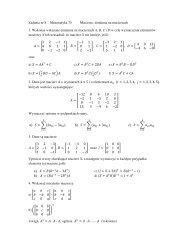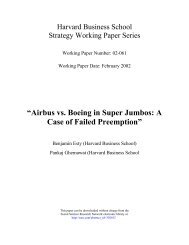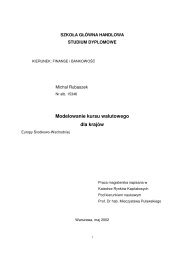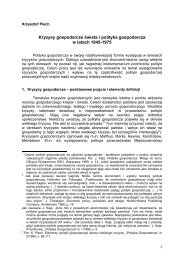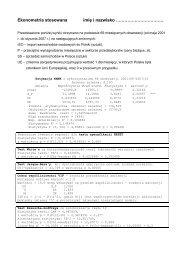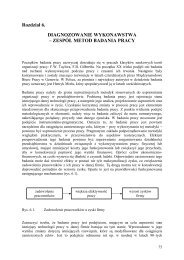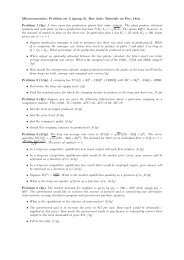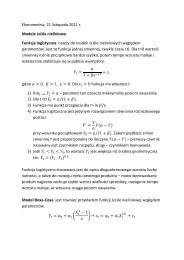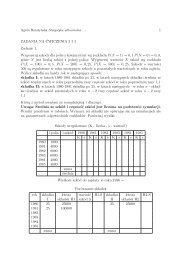Problem sets for Microeconomics II [110051-0471]
Problem sets for Microeconomics II [110051-0471]
Problem sets for Microeconomics II [110051-0471]
Create successful ePaper yourself
Turn your PDF publications into a flip-book with our unique Google optimized e-Paper software.
1 Optimal decisions using marginal analysis<br />
Exercise 1.1. A television station is considering the sale of promotional videos. It<br />
can have the videos produced by one of two suppliers. Supplier A will charge the<br />
station a setup fee of $1,200 plus $2 <strong>for</strong> each cassette; supplier B has no setup fee<br />
and will charge $4 per cassette. The station estimates its demand <strong>for</strong> the cassettes<br />
to be given by Q = 1, 600 − 200P, where P is the price in dollars and Q is the<br />
number of cassettes.<br />
a. Suppose the station plans to give away the videos. How many cassettes should<br />
it order From which supplier<br />
b. Suppose instead that the station seeks to maximize its profit from sales of the<br />
cassettes. What price should it charge How many cassettes should it order<br />
from which supplier<br />
Exercise 1.2. As the exclusive carrier on a local air route, a regional airline must<br />
determine the number of flights it will provide per week and the fare it will<br />
charge. Taking into account operating and fuel costs, airport charges, and so<br />
on, the estimated cost per flight is $2,000. It expects to fly full flights (100 passengers),<br />
so its marginal cost on a per passenger basis is $20. Finally, the airline’s<br />
estimated demand curve is P = 120 − .1Q, where P is the fare in dollars and Q is<br />
the number of passengers per week.<br />
a. What is the airline’s profit-maximizing fare How many passengers does it<br />
carry per week, using how many flights What is weekly profit<br />
b. Suppose the airline is offered $4,000 per week to haul freight along the route<br />
<strong>for</strong> a local firm. This will mean replacing on of the weekly passenger flights<br />
with a freight flight (at same operating cost). Should the airline carry freight<br />
<strong>for</strong> the local firm Explain.<br />
Exercise 1.3. Under the terms of the current contractual agreement, Burger Queen<br />
(BQ) is entitled to 20 percent of the revenue earned by each of its franchises. BQ’s<br />
best-selling is the Slopper (it slops out of the bun). BQ supplies the ingredients<br />
<strong>for</strong> the Slopper (bun, mystery meat, etc.) at cost to the franchise. The franchisee’s<br />
average cost per Slopper (including ingredients, labor cost, and so on) is $.80. At<br />
a particular franchise restaurant, weekly demand <strong>for</strong> Sloppers is given by P =<br />
3.00 − Q/800.<br />
2


![Problem sets for Microeconomics II [110051-0471]](https://img.yumpu.com/32645692/2/500x640/problem-sets-for-microeconomics-ii-110051-0471.jpg)

